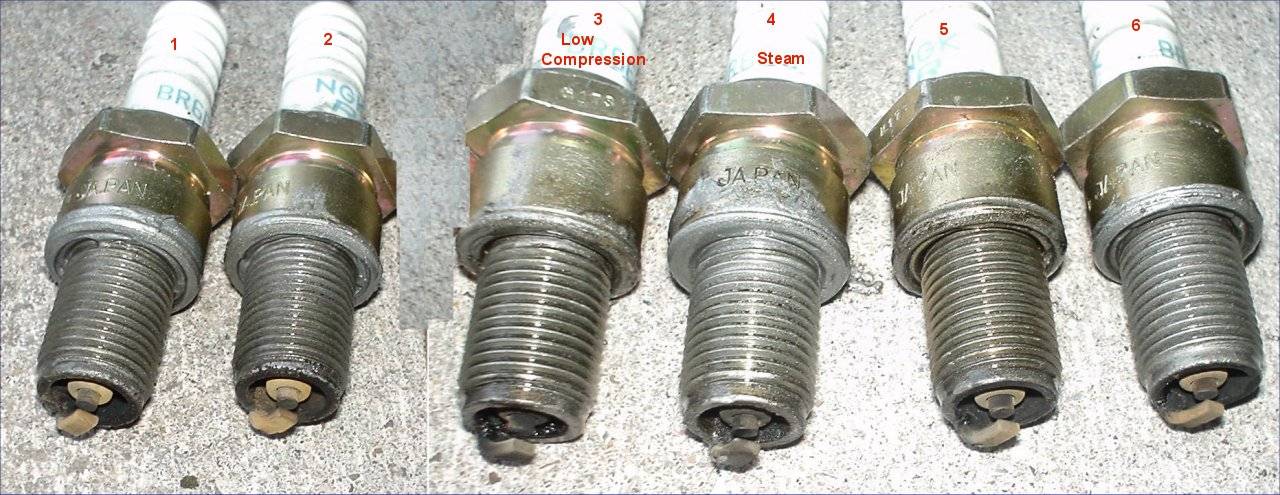
Here are my plugs in mid summer 2003 when I got my car. Clearly #3 and #4 have
an "issue".
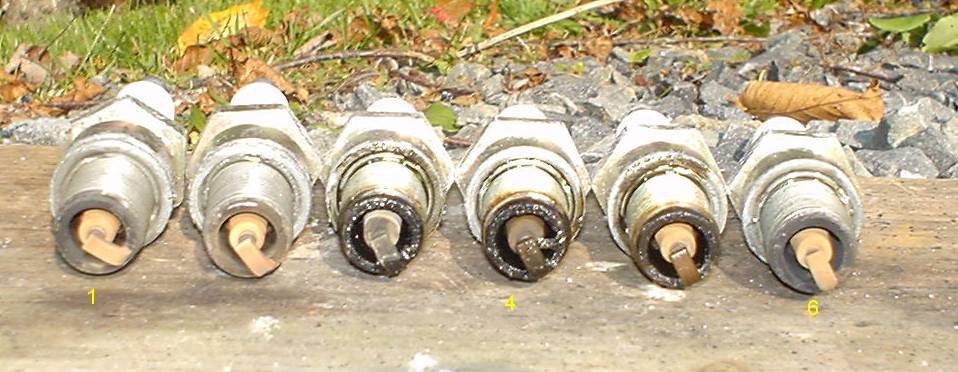
Here are my plugs in late summer 2003. 3 & 4 are the same.
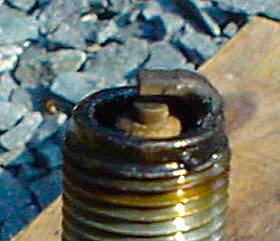
2003 plug 3 with caked on crust.

Here are my plugs last week (June 2005). The are hotter "5 temp" NGK's and
they self-clean much better. You can see that 3 is still bad and 4 has some
crusting.
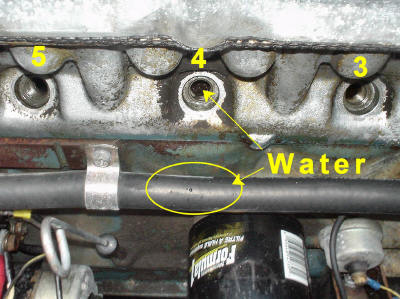
In 2004, I noticed water drops coming out of the number 4 plug hole when doing
a compression test and turning the motor with a remote starter.
Note that water in combustion chambers is supposed to wash them clean... not
on my car! Don't believe everything "they" say.
So I finally pulled the head for the first time hoping I simply had a blown or leaking head gasket. Here is what I found:
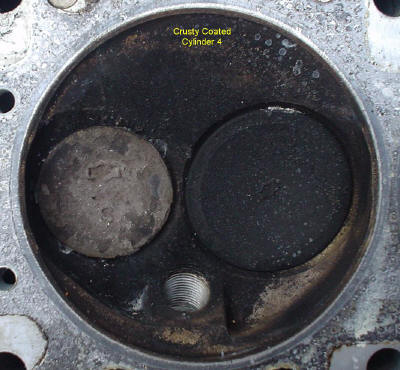
Cylinder 4 was coated with a crust (click to enlarge)
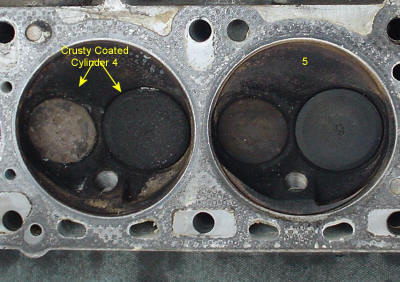
You can easily see the crust difference and thickness when compared to
cylinder five.
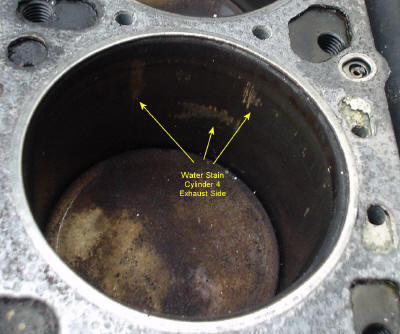
Cylinder 4 walls had white deposits on the exhaust side indicating coolant
dripping.
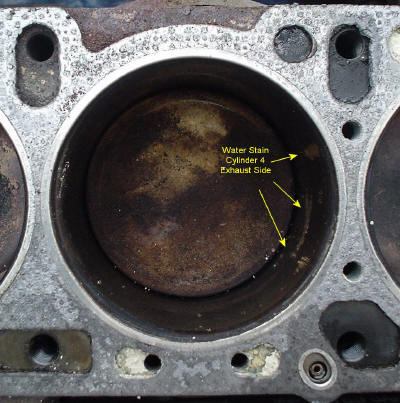
Another view of the same. The other bits are debris that fell from the head
when removed.
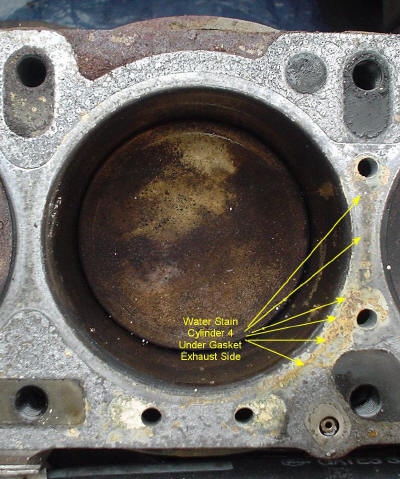
When the gasket was lifted, evidence of water migrating from cylinder 4 to
cylinder 3 is evident.
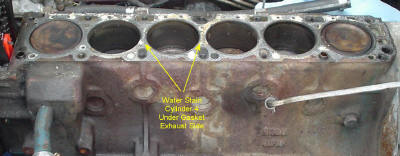
Cylinder 4 actually affected 5 & 3
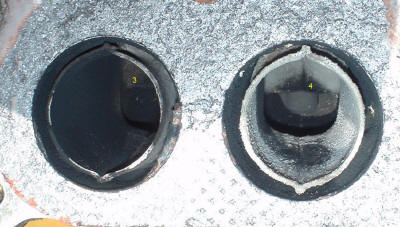
The exhaust liner for cylinder is showing a crusty build up.
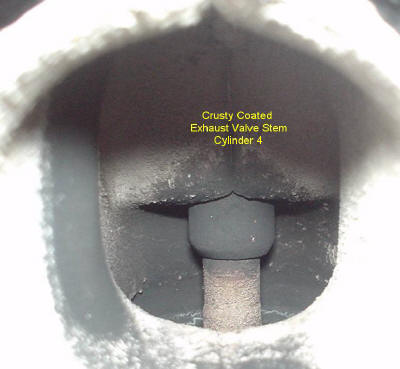
The valve stem also is crusted
The exhaust valve seat is under there some where! Can you see the crack?
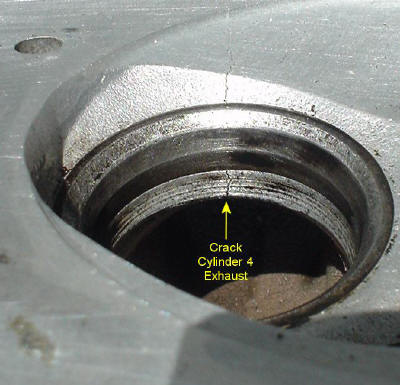
My head has 3 cracks so far. Here is the biggy in number 4 cylinder
Note: This travels along the direction
of the exhaust liner's anchor.
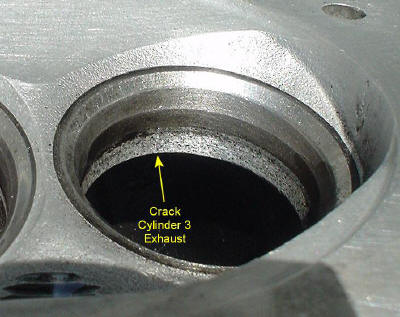
Here is a small one in number 3
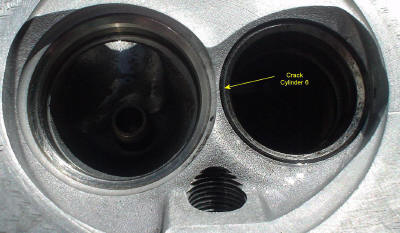
Here is the crack in chamber 6 between the exhaust and intake valves.
Note: Some claim cylinder 6 is the
hottest due to its distance from the radiator however the coolant first enters
the head below # 6 so I question this claim.
So much for my 2mm shaved high compression dished head dished piston experiment